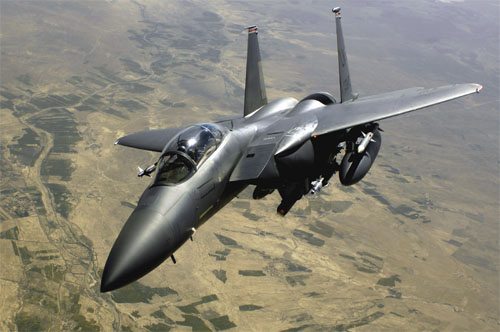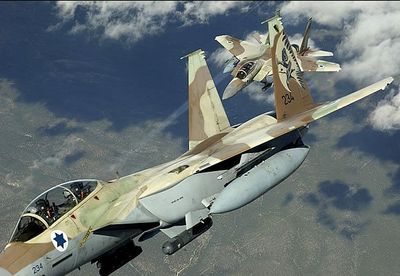After failure of the F-111 as a fleet defender, Grumman immediately began a new design on a clean sheet of paper of a new lightweight fighter, bodily transfer from the F-111B includes the TF-30 engine, Hughes AWG-9 radar and Hughes AIM-54 Phoenix long range AAM. The F-14 was a totally new and un-compromised fighter. The selection process out of five submissions from Grumman, General Dynamics, Ling-Temco-Vought, McDonnel Douglas and North America Rockwell (4 of the 5 design involved sweep wings), Grumman’s design was announced as the winner over McDonnel Douglas of the hastily contrived VFX program.
The first of the 6 R&D F-14 prototype flew on 21 December 1970. The maiden flight was flow by Veteran Bob Smythe and Bill Miller. Unlike the F-111B, no attempt was made to achieve commonality with any aircraft and the need of the fighter sweep/escort; CAP (combat air patrol) and DLI (deck launch intercept) mission was given priority.
AVIONICS
AWG-9 RADAR
The AN/AWG-9 radar was a revolutionary design for its time. Before its introduction, flight crews were forced to interpret the cluttered analog returns on the screen in an attempt to distinguish real targets from the background noise. One of the first radars to feature a signal processor, excess clutter could be filtered out, leaving the crew with a much clearer picture of the airspace before them. The antenna’s slotted planar array measured 36 inches (914 mm) in diameter. To the antenna mounts the Identification Friend Foe (IFF) system made up of 2 rows of 6 dipole arrays. The output power of the AWG-9 is rated at 10.2 kilowatts. The transmitter is capable of generating continuous wave (CW), pulse, and pulse-Doppler (PD) beams.
In addition to providing a clear picture of the airspace before the aircraft, the signal processor provides another benefit to the F-14 Tomcat and its mission. The AWG-9 is able to remove the surface clutter of the Earth’s surface, providing the radar with a look-down, shoot-down capability against low flying aircraft. This feature also proves useful in the detection and interception of sea-skimming anti-ship missiles. The AWG-9 is capable of detecting targets as low as 50 feet and as high as 80,000 feet at ranges exceeding 130 miles. At its greatest range and widest azimuth, the radar can sweep a volume of sky measuring more than 170 miles across. However, the hallmark of the AWG-9 was its ability to track a total of 24 targets at once, engaging in near simultaneous attacks against any six of them with the AIM-54 Phoenix missile.
[table id=5 /]
APG-71 RADAR
With the introduction of the F-14D, the AWG-9 radar was subject to a total overhaul, and re-designated as the AN/APG-71. The changes were so complete that only the transmitter, power supply, and backseat Tactical Information Display (TID) remained from the original AWG-9. Unlike the more analog AWG-9, the APG-71 uses a digital signal-processor to provide better target detection and greater tracking range while being less susceptible to jamming. The speed at which the radar processes information is also improved by a factor of six.
The APG-71 features additional operating modes as well. Targets can now be identified without the need of visual identification. This means that threats can be intercepted at greater ranges, increasing the margin of safety for both aircraft and carrier. The APG-71 also features a Raid Assessment mode similar to that found on the F/A-18. The mode is used to resolve a situation where a pilot faces an undetermined number of closely spaced targets. Normally the group would appear as one contact on the radar display. Effective up to a range of 35 miles (55 km), Raid Assessment uses Doppler beam sharpening to provide increased resolution of the patch of airspace around the group. Typically the minimum amount of separation between aircraft must be approximately 500 feet (150 m). The APG-71 also features a ground-mapping mode as well in order to deliver accurate attacks against ground installations.
IRST
The F-14 AN/AAS-42 IRST (Infrared Search and Track) is a passive long-wave infrared sensor system that searches for and detects heat sources within its field of view. Operating in six discrete modes, the AN/AAS-42 provides the aircraft mission computer track file data on all targets while simultaneously providing infrared imagery to the cockpit display. The AN/AAS-42 gives the aircrew unprecedented on-board situational awareness while significantly enhancing the engagement range of modern high-performance weapons such as the AIM-120 (AMRAAM).
ARMAMENT
In air-to-air mode, the F-14 carries the legendry AIM-54 Phoenix missile which gave the Tomcat an unbeatable edge over its contemporaries. Mated with the AWG-9, this missile could engage targets at ranges of over 100 miles, and at speeds exceeding Mach 4.0. In addition to the AIM-54, the Tomcat carries the AIM-7 Sparrow SARH missile and the standard AIM-9 Sidewinder dogfight missile. With the coming of the F-14D Super Tomcat, the AIM-120 AMARAAM active-radar guided missile has been added to the F-14’s arsenal, making it ever so lethal.
In air-to ground mode, the F-14 A/B carries only cluster bombs and iron-bombs. But with the addition of the LANTIRN pod, it can also carry LGBs. However, the F-14D Super Tomcat can carry AGM-88 HARM, AGM-84 Harpoon/SLAM, JDAM and GBU series bombs.
POWERPLANT
The F-14A Tomcat was powered by two massive TF30-414A Afterburning Turbofans with over 40,000 lb Total Thrust. While the engines were quite powerful for their time, the F-14 was still considered underpowered. And it is due to this very power-plant, that the F-14 was considered a poor dogfighter. The reason being that whenever the AoA of the aircraft changed rapidly, the engine would go into a compressor stall – a state where the engine stops the intake of air and flames out. This problem can be seen when the F-14s go out for DACT. None of the Tomcats carry AIM-54 and ACMI pods are limited to inner rails only.
The problem was later corrected in the F-14B and subsequent models, by the use of two F110-GE400 Afterburning Turbofans with over 54,000 lb Total Thrust. These engines not only gave the F-14 the excess power, but also made it a potent dogfighter.
[table id=6 /]
[ppgallery id=”2″]









